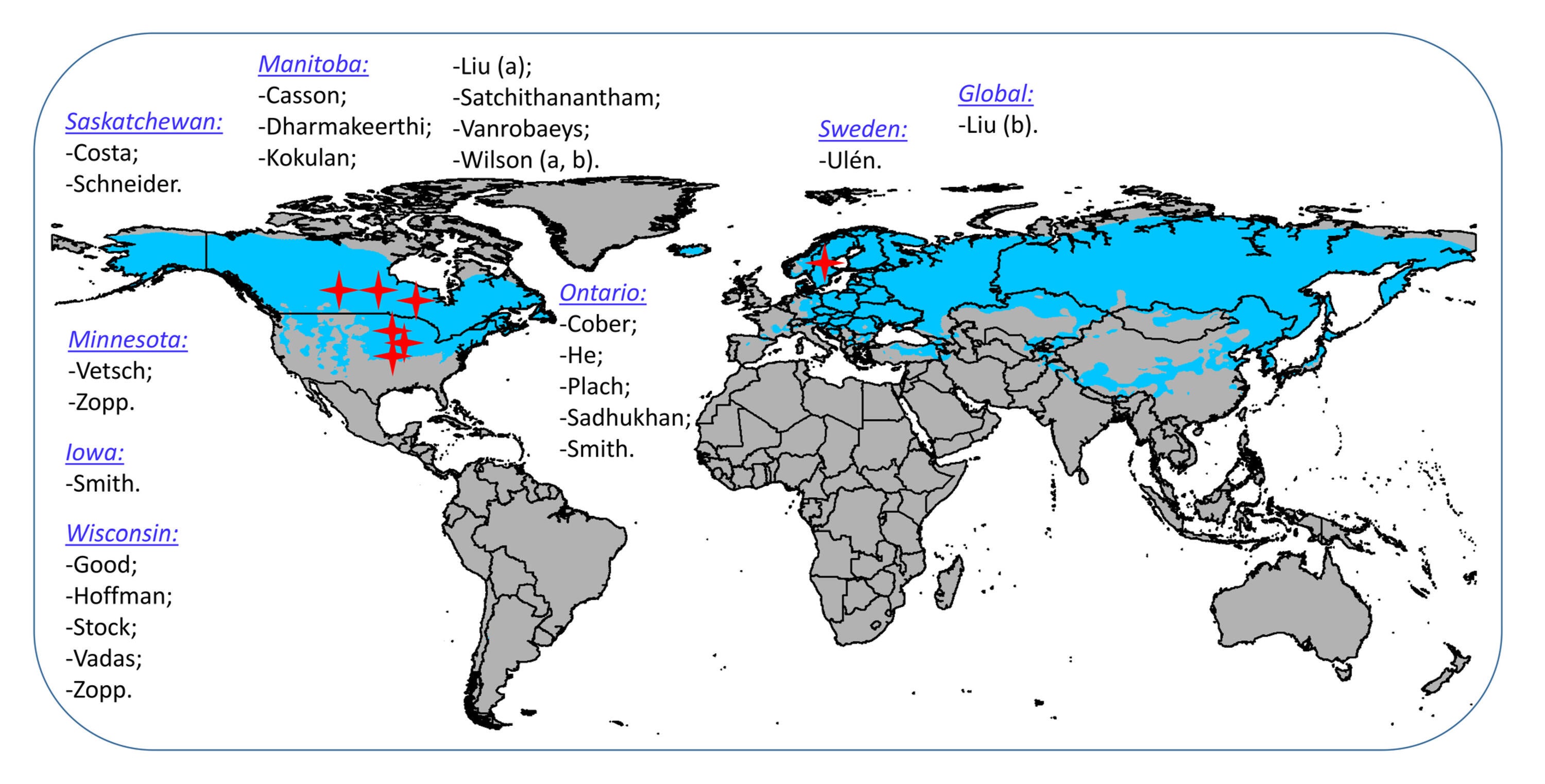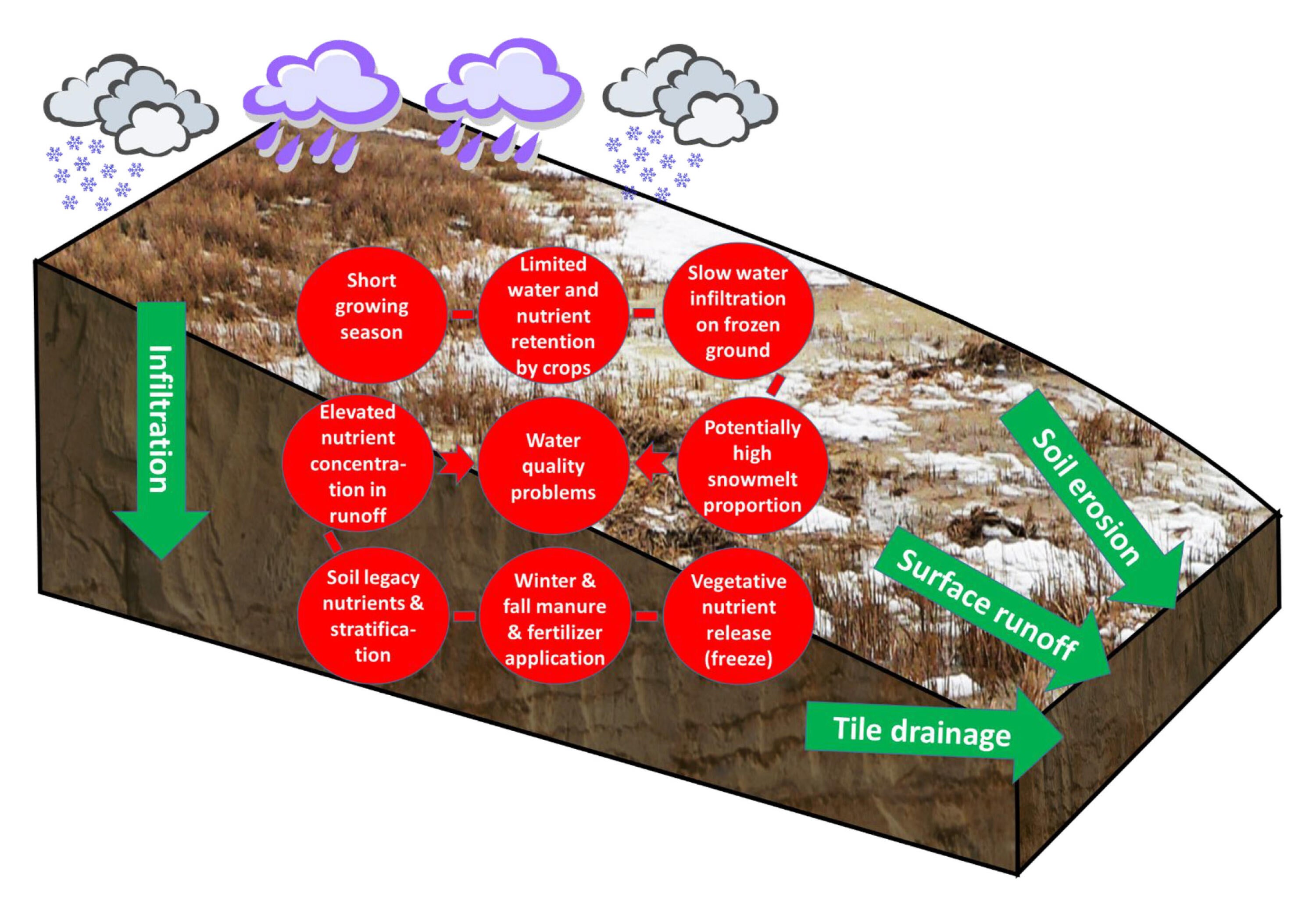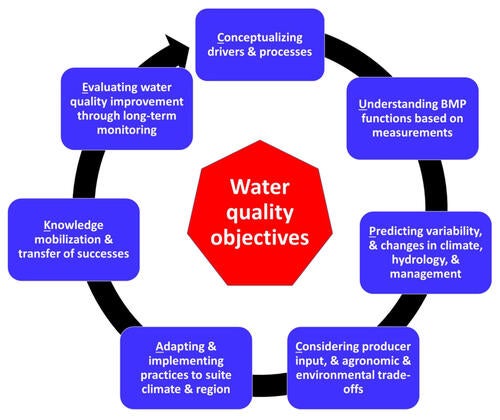Introduction
Cold climate regions cover a wide span of latitudes and constitute an important part of global crop and livestock production. There has been, however, a growing concern over agricultural water quality in cold regions, specifically the transport of nutrients from agricultural landscapes to downstream streams and lakes causing eutrophication.
Although implementation of beneficial management practices (BMPs) has successfully reduced nutrient losses in some cold regions, the identification of generally applicable BMPs has been a challenge because key processes and controls on nutrient export may differ regionally across cold climates. This study reviews key agronomic, biogeochemical, and hydrological characteristics of cold agricultural regions in assessing the potential efficacy of various BMPs.
Methodology
This review paper synthesizes findings from 23 studies to provide new insights into nutrient cycling and hydrochemical processes, model developments, and the efficacy of BMPs across varied cold agricultural regions (Figure 1).

FIGURE 1: Map of cold climate regions with geographic distribution of the papers reviewed overlaid as red with names of study authors.
Outcomes
In cold agricultural regions, several unique features distinguish agronomic, biogeochemical, and hydrological processes from those in warm regions and have important implications for the supply and transport of nutrients in the environment (Figure 2).

FIGURE 2: Diagram showing key agronomic, biogeochemical, and hydrological characteristics influencing nutrient losses in cold agricultural regions.
In cold agricultural regions, crops and soils typically experience a period of snow cover and freezing, which can affect nutrient cycling. Growing seasons are typically short, and year-round nutrient removal by crops tends to be small. At cold temperatures, nutrients added to the soil through crop residues and livestock manures have low mineralization rates due to reduced microbial activity. Although cold temperatures may slow down biogeochemical reactions, reducing the rate of nutrient release, these processes may be countered by other processes that can increase nutrient mobilization, such as a prolonged flooding period or the period of time between runoff and snowmelt events which can release nutrients from soils and plant materials. The non-growing season can therefore, be important for chemical export.
Nutrient transport in cold agricultural regions also differs from warmer regions as precipitation occurs as rain, snow, and rain on snow. Characteristics of snowmelt runoff are different from rainfall-runoff in several ways, including the delay between snowfall and runoff events, the potential for snow to be re-distributed by wind impacting runoff volumes spatially, and the limited infiltration and nutrient retention capacities of frozen soils during snowmelt runoff events.
In regions with relatively mild winters, phosphorus runoff loss is dominated by winter snowmelt or rain on snow events and by summer rain events. In contrast, in regions with harsher winters, snowmelt plays a more dominant role in annual runoff and total phosphorus loss. In watersheds where snowmelt dominates runoff, more extensive networks of drainage ditches tend to increase overland nutrient losses due to enhanced hydrological connectivity. Characteristics of runoff and nutrient losses in cold agricultural regions can also be affected by large-scale climatic patterns, both spatially and temporally.
Total phosphorus concentrations in snowmelt runoff are dominated by dissolved forms in some regions, but by particulate forms in other regions, likely related to the soil type and freezing status at the time of the runoff occurrence. Nutrient concentrations in agricultural streams moreover often show strong seasonality.
The BMPs that have been developed to mitigate nutrient losses in warm regions have been relatively well-characterized, and they may be effective during the warm seasons in cold agricultural regions. However, cold agricultural regions face unique water quality management challenges, such as high nutrient export associated with winter and fall nutrient applications, and elevated nutrient release associated with freeze-thaw cycling. Accordingly, the biogeochemical and hydrological conditions that are characteristic of cold climate regions require consideration when applying BMPs developed for warmer regions.
There remains a need to improve our understanding of how interactions among climate, hydrology, land, and management affect water quality in cold agricultural regions. This is especially important for designing BMPs to mitigate nutrient losses in variable and changing climates. In particular, there is a need to redefine optimum soil phosphorus levels and input regimes in cold regions to allow for the achievement of water quality targets while still supporting strong agricultural productivity. We propose a systematic approach to managing agricultural water quality in variable and changing climates using a CUPCAKE approach (Figure 3).

FIGURE 3: CUPCAKE approach to managing agricultural water quality in variable and changing climates, including Conceptualization, Understanding, Prediction, Consideration, Adaptation, Knowledge mobilization, and Evaluation.
Conclusions
Cold agricultural regions face unique water quality challenges because of their agronomic, biogeochemical and hydrological characteristics. This review revealed the critical role of the non-growing season in annual nutrient losses, the strong seasonality of nutrient transport in cold climates, the potential of nutrient, crop, water, and riparian buffer management to reduce (or increase) nutrient losses and the varying effectiveness of BMPs between years and across regions.
Management options reviewed ranged from in-field nutrient, crop, and water practices, to edge-of-field and stream-side nutrient purification systems such as vegetated buffer strips. The review concluded that BMPs need to be considered through a regional and site- specific lens, due to potential interactions between climate, hydrology, vegetation, and soils which influence the efficacy of nutrient, crop, water, and riparian buffer management.
Visit the Agricultural Water Futures (AWF) website for more information on the program.
Liu, J., Baulch, H.M., Macrae, M.L., Wilson, H.F., Elliott, J.A., Bergström, L., Glenn, A.J. & Vadas, P.A. (2019). Agricultural water quality in cold climates: Processes, drivers, management options, and research needs. Journal of Environmental Quality. doi:10.2134/jeq2019.05.0220
For more information about WaterResearch, contact Julie Grant.











